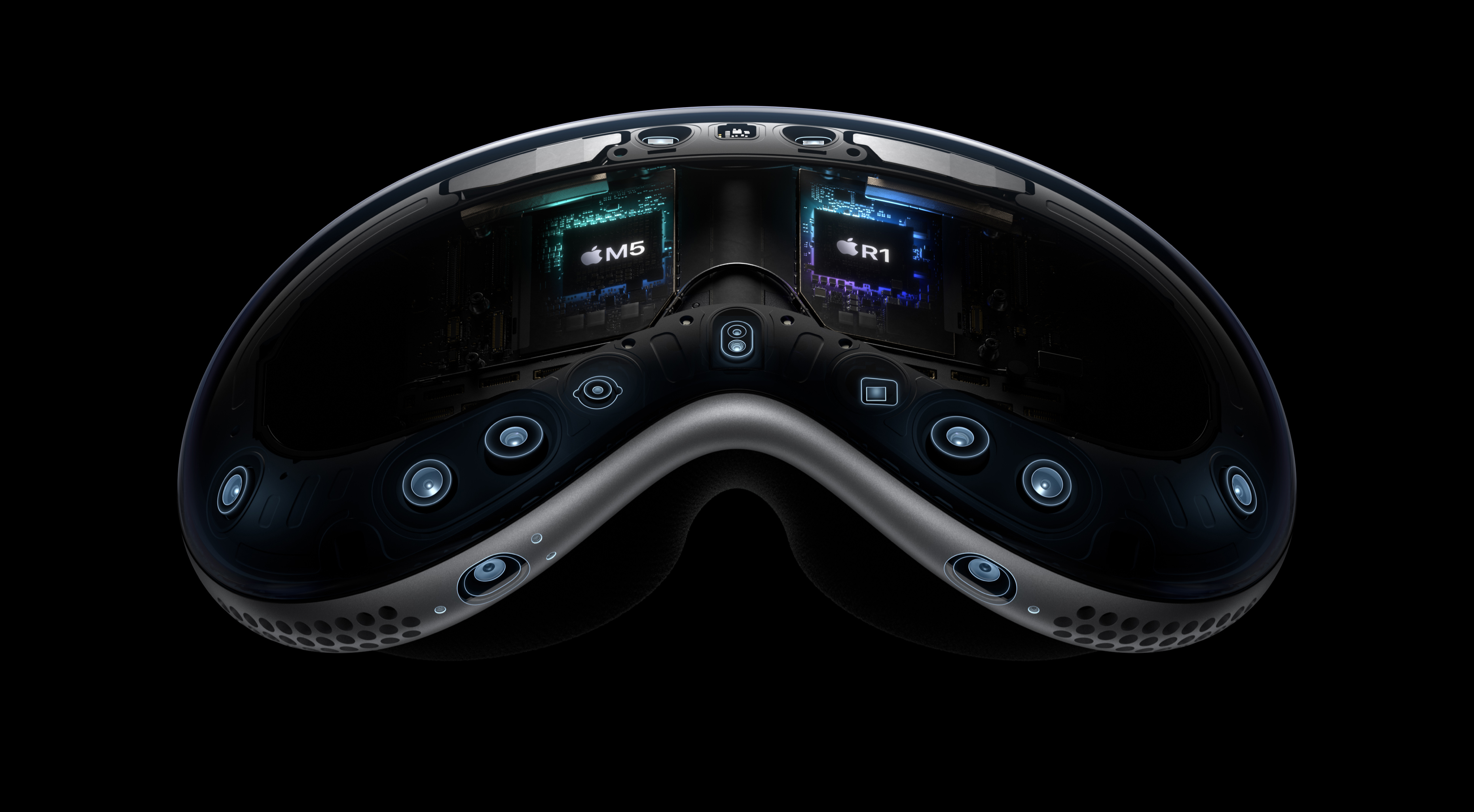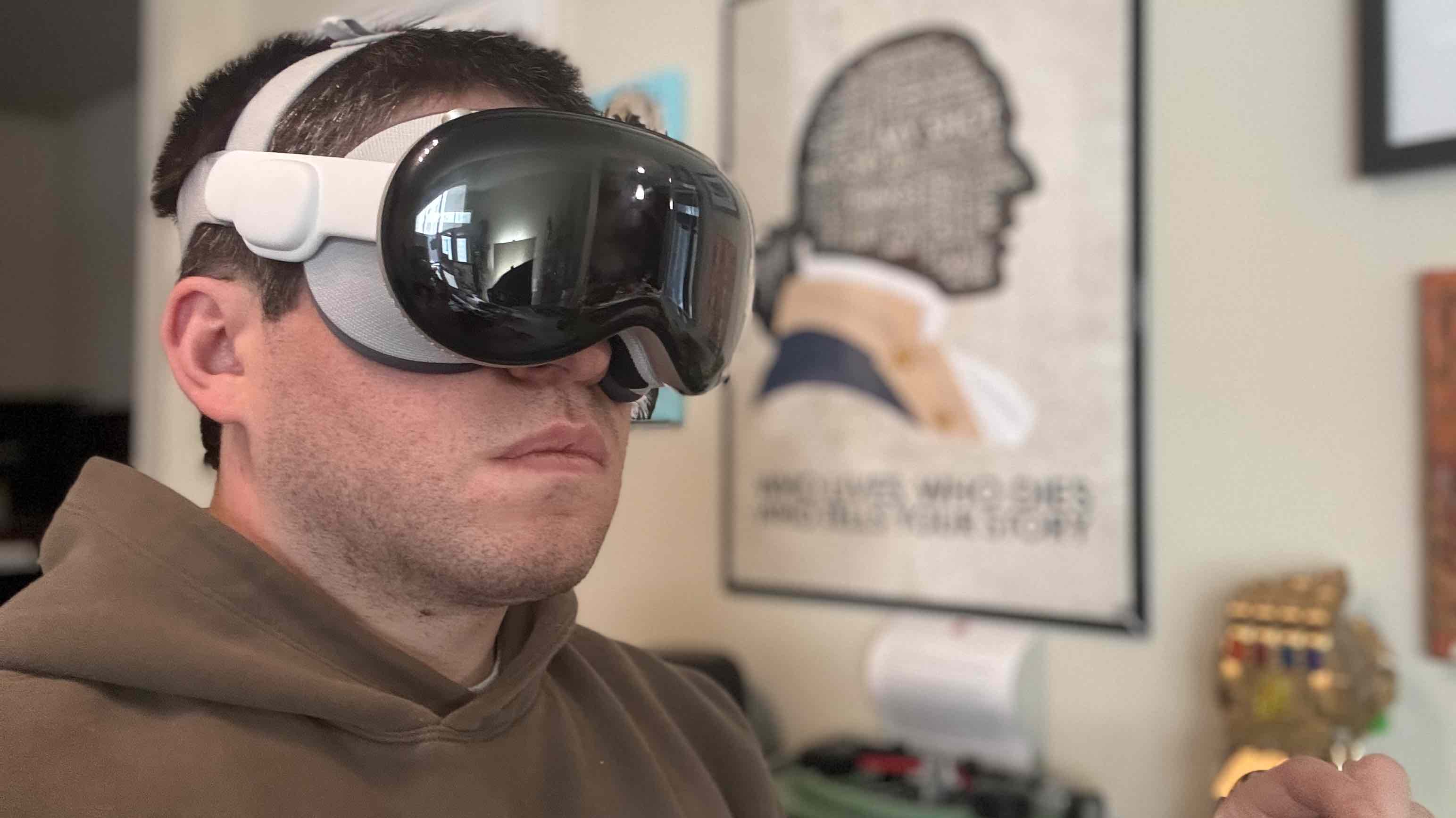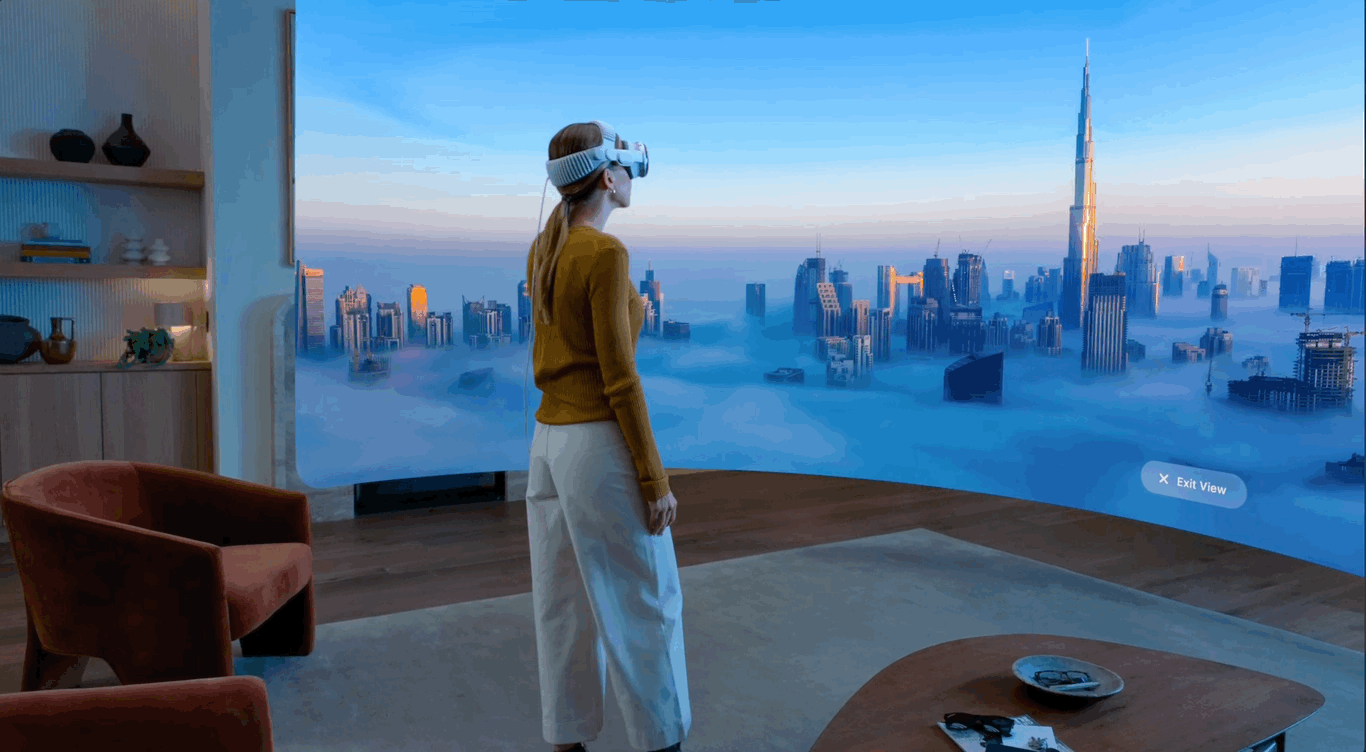- Apple just upgraded the Vision Pro for the first time
- It’s not a redesign, but the M5 chip is now under the hood
- There is also a new Dual Knit band, which seems much more comfortable.
While not a redesign, Apple is updating the Vision Pro’s hardware for the first time. The $3,500 Space Computer – Apple’s first push into virtual and augmented reality hardware – launched in the US in February 2024, about 19 months ago, with a whole host of specs, but most importantly, an M2 chip under the hood.
The now aptly named Apple Vision Pro (M5) replaces the M2 with the all-new M5 chip with a next-generation 10-core CPU and 10-core GPU. This will undoubtedly improve performance in visionOS 26 and countless apps, but Apple also says it will allow displays to render 10% more pixels and adapt to up to a 120Hz refresh rate for a clearer view of your surroundings – all when the headset is on, of course.
Apple is also aiming to improve comfort, and this improvement can be purchased as an accessory if you have already invested in a Vision Pro.
The Cupertino-based tech giant is launching the “Dual Knit Band” for the headset, which “provides an even more comfortable fit for users,” according to Apple. It’s a sort of cross between the two existing bands made by Apple – Solo Knit and Dual Loop – with one strap going over your head and one behind, the latter featuring a counterweight element that should improve the overall fit.
If you’ve been considering a Vision Pro, the promise of live, immersive NBA games or that M5 upgrade may have now sold you. Apple is already taking orders for the upgraded headset, and it will start arriving to customers on October 22, 2025. It still starts at $3,499 in the US, £3,199 in the UK, and AU$5,999 in Australia. But let’s break down these changes a little further.
With the M5 chip under the hood, Apple is claiming improved performance across the board, as well as improvements to AI tasks.
Just like the M5 chip coming in the iPad Pro M5 or MacBook Pro M5 14-inch, it’s a 10-core CPU, a 10-core GPU, and a 16-core Neural Engine, all housed on a 3-nanometer chip inside the Vision Pro. This should speed things up in visionOS 26, with Apple specifically noting faster loading times for widgets and apps, as well as more responsive web browsing.
Even more exciting for the potential of gaming and other new immersive experiences is support for hardware-accelerated ray tracing thanks to the next-generation GPU. As we’ve seen with other devices offering this, it gives developers and designers more control and leverage for more detailed graphics, including much more realistic shadows and lighting in environments.
It will be exciting to see how third parties use it for immersive environments on Vision Pro, but also for gaming on the platform as a whole – perhaps even if you extend your Mac’s screen with a virtual display. I could also see Marvel developing the current What if? immersive experience or start new ones.
AI-driven experiences on Vision Pro, like setting up your Persona – which got a major day and night improvement with visionOS 26 – and transforming photos into spatial scenes, will be up to 50% faster with the 16-core Neural Engine. This also leads to up to 2x faster performance for third-party apps.

While the original Vision Pro reached a maximum refresh rate of 100Hz, this upgraded model can reach up to 120Hz for reduced motion blur and clearer visuals when viewing your surroundings in passthrough or transparency modes.
This is also the result of the fact that micro-OLED screens are now capable of rendering 10% more pixels. We’ll have to test this to see how much of an improvement it is, as passthrough was already ahead of other competing headsets like the Meta Quest 3.
The M5 chip will still work in tandem with the R1 chip, which is not updated here. It will continue to support the five sensors, six microphones and twelve cameras to process these feeds and inputs quickly, translating it all in 12 milliseconds to create your view of the world around you.
Apple is also improving battery life, to 2.5 hours for daily use and three hours for video playback, a jump of 30 minutes for both. It should be noted that there is no change to the battery: it is still the same, with the same connector to the Vision Pro. And for longer sessions, you will need to plug the battery into the mains, which could actually be another battery.

So while it’s not a redesign or a more affordable price, the timing of the upgrade here definitely makes sense.
The M2 chip is aging quite well and still delivers fast performance in the current Vision Pro, but an update to the M5 likely leaves a bit more headroom for the headset and speeds things up, with new competition likely on the horizon. Samsung has set the official unveil date for October 21, 2025 for its Project Moohan Android XR headset, which looks a lot like the Vision Pro.
For people who already own a Vision Pro, or those who are considering it, the Dual Knit Band could solve a particular problem if you’re concerned about comfort. Apple isn’t limiting itself to the M5 version of the Vision Pro either; it is a standard accessory that works with both generations of headphones.
It’s on order now for $99 in the US, £99 in the UK and AU$169 in Australia. I can’t wait to test it out and see what it does over longer periods of time with the Vision Pro enabled.
visionOS 26 brought some pretty major improvements to the headset that should speed things up, and more immersive content is on the horizon, including the long-awaited arrival of live sports in Apple Immersive format. It was recently confirmed that select Los Angeles Lakers NBA games will be streamed live on Apple Immersive by 2026.
Follow TechRadar on Google News And add us as your favorite source to get our news, reviews and expert opinions in your feeds. Make sure to click the Follow button!
And of course you can too follow TechRadar on TikTok for news, reviews, unboxings in video form and receive regular updates from us on WhatsApp Also.




